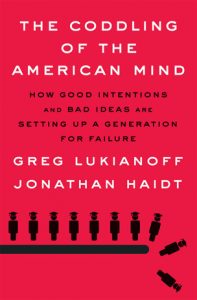
In the summer of 1942, the USS South Dakota set sail to do battle in the Pacific. One of the gunners on board was Calvin Graham. On November 14, the South Dakota encountered eight Japanese destroyers. Graham was manning his gun when shrapnel tore through his jaw and mouth. Another hit knocked him down, and he fell through three stories of superstructure.
He then made it to his feet, dazed and bleeding, and helped pull other crew members to safety. “I took belts off the dead and made tourniquets for the living and gave them cigarettes, and encouraged them all night,” Graham later said. “It was a long night.” The shrapnel had knocked out his front teeth, and he had flash burns from the hot guns.
Calvin Graham was awarded the Bronze Star and the Purple Heart. At that time, he was 13 years old. When Graham joined the Navy, he lied to the officials saying he was 17 when he was 12.
Think of any 12 year-olds and imagine them in this situation. Could they complete basic training and convince Navy officials that they are combat ready?
While Calvin Graham was an anomaly even in his day (although there are 1,200 members of the Veterans of Underage Military Service), his story would be unimaginable in America today.
Teaching the Great Untruths
What has changed? The recent book, The Coddling of the American Mind: How Good Intentions and Bad Ideas Are Setting Up a Generation for Failure, attempts some explanation for more recent behavior shifts from the Millennial Generation to iGen (or Generation Z).
Women’s March Feminists Brawl Over Who is More Equal
Authors Jonathan Haidt and Greg Lukianoff presciently describe what they term as three “Great Untruths,” which iGeners have learned and absorbed, often subconsciously, from parents, teachers, and society. These bad ideas are “you are fragile,” “trust your feelings,” and “life is a battle between good and bad people.” The latter idea conveniently redefines bad people in terms of the first two. Bad people make others feel unsafe and fragile.
With much insight, Haidt and Lukianoff denounce the “fetishization of safety” and the suppression of all suffering and even discomfort. They claim this makes children less safe emotionally and mentally. The authors followed the alarming rise in youth suicide rates and depression and the proliferation of “safe spaces” and “trigger warnings” on college campuses. They decided to investigate what was happening in child-rearing and education. Something was wrong.
What Doesn’t Kill You Makes You Weaker
They found a prevailing attitude that sees children (even college students) as fragile. Indeed, they need to be protected from peanuts, scrapes, bullying, being left out, and a host of other real and imaginary dangers.
Is It Immodest to Wear Deliberately Ripped Clothes?
However, Haidt and Lukianoff show that children are what they call “anti-fragile,” which means “they require stressors and challenges to learn, adapt, and grow.” Difficulties and suffering are inevitable since no one can thrive without overcoming minor setbacks. Youth needs to learn how to deal with adversity from early childhood.
Today, too many children are raised to see every difficulty or risk as an injustice. While safety must be considered, the present culture has expanded terms like safety and trauma to refer to an ever-increasing number of situations and events. Thus, more and more people become “victims” of these “dangers” and “traumas.”
One defect of these expanded definitions is their subjective element. The real danger is secondary. What determines danger is the mantra: I feel unsafe; therefore I am. Thus, educational or other environments must protect youth from feeling unsafe. Moreover, adults and teachers make matters worse by constantly warning youth about these expanded dangers that surround them. This vicious cycle of over-protection and hyper-warning creates a constant feeling of danger. From hence comes the origins of safe spaces, trigger warnings, and microaggressions.
What does Saint Thomas Aquinas say about Marriage?
Trust Your Feelings
Such harmful impressions teach youth to regard their feelings as a source of truth. They seek out cognitive distortions of reality. Critical thinking is considered anachronistic.
A characteristic example is the microaggression. When Derald Wing Sue coined the term to describe ingrained culture bias, he included in the definition “whether intentional or unintentional.” Aggressions are intentional by definition. However, this changes when emotional reasoning takes precedence. The aggression now follows the logic: I think you wished me harm; therefore you did. And you should be punished. The current dictatorship of political correctness on college campuses finds philosophical and psychological support in this logic.
The primacy of emotion over thought is a result of Original Sin. From the Catholic perspective, disordered passions must be controlled by the will illuminated by the intellect. In the victim culture, the role of the intellect is to validate a posteriori the desires and moods dominated by feelings. Wisdom has no place in such a climate.
Wisdom
However, wisdom is what is needed. For Lukianoff and Haidt, this wisdom is found in several interesting and thought-provoking ideas that challenge the present culture. Some solutions call for strengthening free speech on politically-correct campuses. The authors embrace the “free range children’s movement,” which embraces unstructured learning and healthy independence for young children. They discuss aspects of Cognitive Behavioral Therapy, which teaches people how to question those automatic thoughts and reactions that can cause emotional discomfort.
This latter question of self is probably the closest the authors come to getting to the core of the problem. When feelings predominate over reason, it calls for the age-old Catholic asceticism of dominating the sensibility. It is the intellect and will that distinguishes humanity from other parts of living creation, and makes man “in the image and likeness of God.” Wisdom is the ordering of all things according to their highest cause that allows the intellect to sort out what is real from the imagined.

Throughout their work, the authors’ naturalistic and secular perspective hinders them from getting to the depths of both the problems and their solutions. For example, they neglect to discuss the breakdown of the family and its role in the emotional instability of young people. The authors applaud the advance of the transgender movement, which represents the triumph of feelings over reason that they so severely criticized. Finally, it is hard to create a culture of wisdom while turning away from God Who is Wisdom.
One might also find fault with the authors’ optimism. After clearly analyzing the polarization and identity politics that created unhealthy mindsets, Haidt and Lukianoff conclude that things will soon improve. They hope that the more serious the problems get, the more likely people will take notice and react. However, this sounds like I feel the culture will improve; therefore it will.
The Coddling of the American Mind offers intriguing insights into the current chaos on college campuses and the epidemic of adolescent suicide and depression. It is well worth a read.
[like url=https://www.facebook.com/ReturnToOrder.org]
The Coddling of the American Mind: How Good Intentions and Bad Ideas Are Setting Up a Generation for Failure by Greg Lukianoff and Jonathan Haidt, (New York: Penguin Press, 2018)


